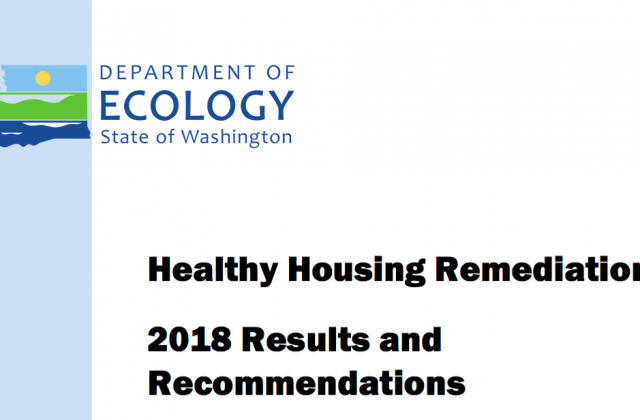The Economics of Contamination: Another Cost Driver for Housing
As I pointed out on the Seattle Channel for buildings needing seismic upgrades, what drives the use of a site or buildings is the economics of the site. That’s different than the oft cited “profit” that activists for the status quo site as the motivator for use. There must be a return for investors. That’s why it’s called an investment. But when the economics of a site don’t work for redevelopment, usually the use stays the same. In the case of Showbox, the best use is housing. Alternatively, if money can be found to make seismic upgrades, the theater use might make sense. What about contaminated sites, places where there is significant remediation needed that makes housing infeasible. There is an answer suggested in a program from the Department of Ecology.
Last session the legislature passed Engrossed Substitute Senate Bill (ESSB) 6095 directing the Department of Ecology to develop a program to assist with these cleanups. Here’s the problem statement from the full report.
Cleaning up contamination on sites with potential for use in affordable housing can provide another means to relieve the pressures on public housing while preserving existing communities. Even the investigatory stages of cleanup can prove expensive and difficult to finance. The cost of cleanup affects the cost of development and may contribute to higher purchase prices or rents for new tenants, home buyers, and customers. This added cost, combined with other factors driving up property value, can lead to displacement and disruption of existing communities. The pilot proposed in this report aims to help communities that have lived with contamination enjoy the benefits of its removal and share in the benefits of the wave of redevelopment already impacting their lives (emphasis is mine).
When the people through the law determine certain things are unsafe, they often make laws that restrict or mandate behavior. In the case of seismic upgrades, the law mandates upgrades as uses change or renovations happen. If you’re going to change a building, lots of new requirements kick in.
With contamination, the determination is that an old truck parking lot, for example, has lots of toxins leaked into the soil. Maybe the property has big tanks with residual chemicals that are hazardous. That soil and those tanks need to be removed according to the law. But the law doesn’t provide the money for private parties to pay for that remediation; so the contaminated land with the tanks stays just that, vacant contaminated, and underutilized land.
What’s problem and a possible answer? From the report:
Cleanup costs may contribute to higher purchase prices and rents for future owners and leaseholders. The economic impact of these costs can affect housing and local communities in two major ways:
1) Prices for goods, services, and housing rise to meet these higher development costs.
2) Higher costs may displace existing communities and residents. Many of the places thathave suspicion of, or confirmed, contamination have provided low-income communities, and working families, affordable places to live as Washington’s economy has grown.
State grants can provide money to offset the cost of investigation and cleanup. Combining these grants with requirements to build affordable housing can help provide homes and apartments in more affordable price ranges (emphasis mine).
Yes, I know. You’ve heard me say over and over again that more money is not the answer. Well, in general it isn’t. Simply dumping more and more money into the Housing Trust Fund without addressing costs — like remediation of contaminated sites — doesn’t make sense. But Ecology has started the work. That’s why we’ve recommended in our reform package an allowance for Housing Trust Fund dollars to be used for clean up and remediation. This doesn’t just have to be for non-profit sites but for any site that has been fallow for years because the costs are just too high.
If we believe the regulations are good and based on strong science and that people will be harmed without remediation, then we have to realize that has an economic cost; the land won’t be useful for housing unless that housing is expensive enough to rationalize — that is, absorb — the costs of remediation. The math is simple, if we want the price of that housing to be lowered, then we must contribute to the clean up. Otherwise, the site will stay a parking lot. This is a big deal for housing, and I hope the legislature gets it and creates a program that leverages the Housing Trust Fund for this purpose, especially in rural areas that haven’t received funding.


